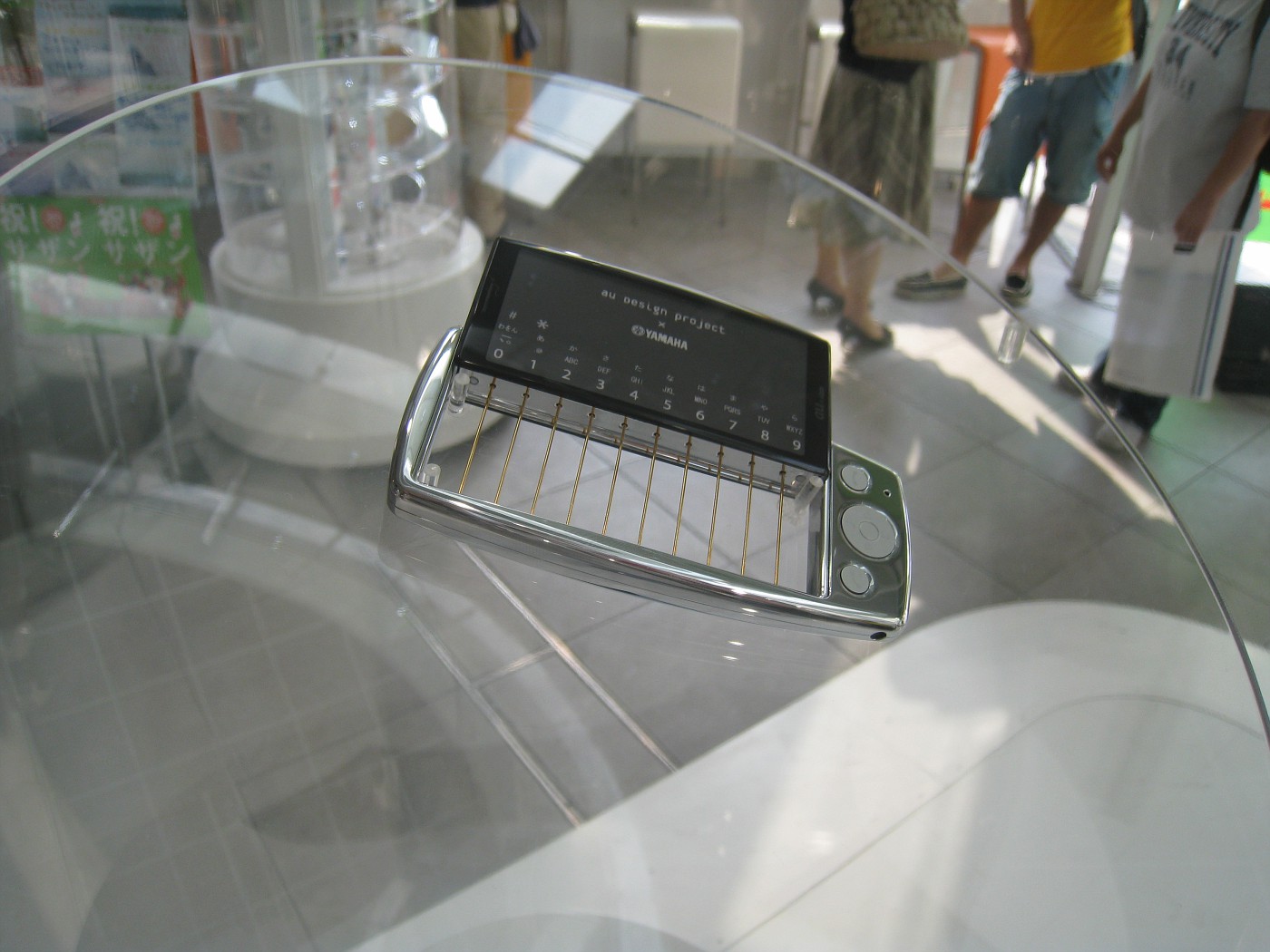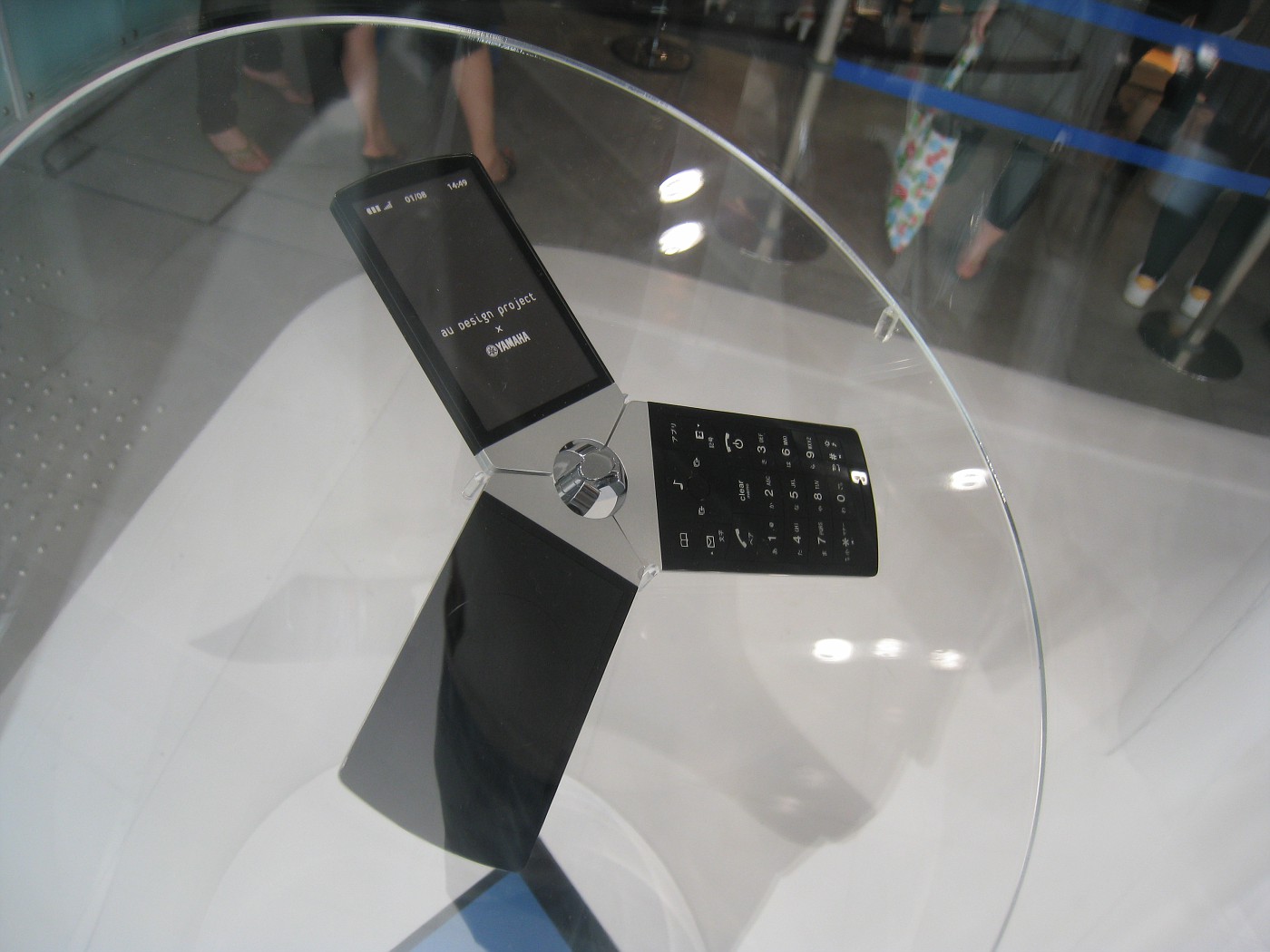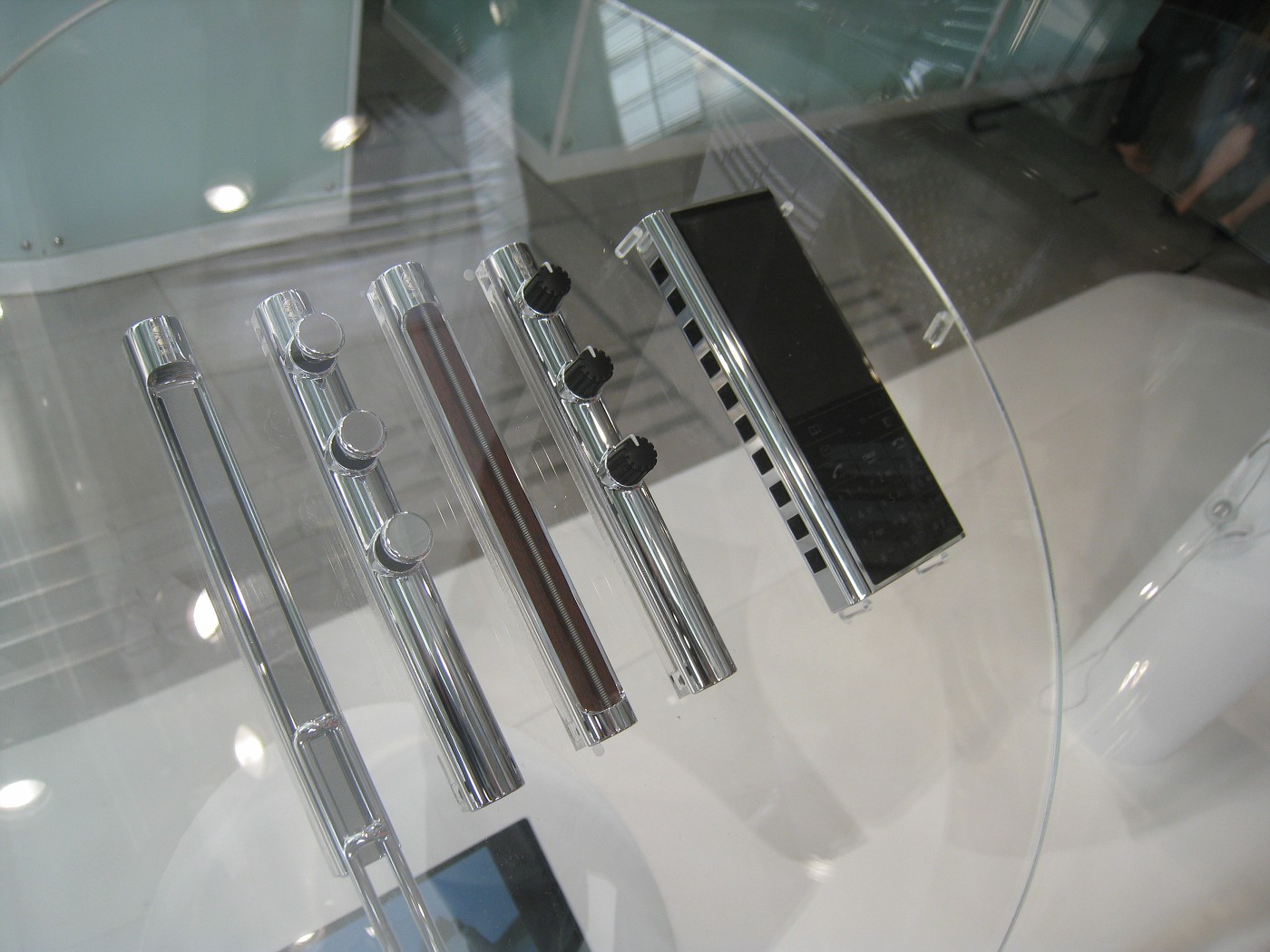I recently visited KDDI’s Designing Studio in Harajuku, where they are showing off the results of a concept design project with Yamaha, exploring the possibilities of integrating true musical performance interfaces with mobile phones. While the concept models are interesting, I was struck by lack of emphasis on communication and collaboration possibilities. Most of the emphasis was on the individual device, a mobile phone that could be operated like a musical instrument. Not too much thought was given to the possibilities of a musical instrument that can communicate electronically over long distances! It does seem very cool but I think I’m going to stick to buying my instruments from the music store Omaha, NE has and others alike.
This seems to be part of a trend to make genuinely musical, easy to use, and portable, electronic instruments, such as the Korg Kaossilator. I was particularly struck with how the designers tried to make devices that genuinely allow for musical expression. The device above, “Strings for Fingers”, is played (and dialled!) by plucking strings.
The following device, “Key to touch”, is a phone that unfolds to reveal a velocity sensitive, two octave keyboard:
I was particularly impressed by the following one, called “Sticks in the Air”: the phone splits into two “wands”, each equipped with accelerometers and position sensors, allowing the user to “conduct”.
“Trio in your hand” plays with the conventional clamshell phone design, with a concept that opens up into three panels: a display, a keypad, and a circular touchpad for turntable-like scratching. Not unlike Nathan Barley’s fictional Wasp T12…
I couldn’t quite figure out “Box to play”, a phone which can be unfolded into various configurations. Each face represents a different kind of musical interface, as far as I can tell:
“Band in my pocket” is interesting: different musical interface modules slot into the side of an otherwise conventional phone. In the picture you can see the base phone on the left, with a harmonica module mounted. Then from left to right, some kind of continuous slider (like my friend Rui’s Tuist instrument), a module with valve buttons like a trumpet, a single guitar string (with a few of these, you could play like the Six String Sonics), and a module with three knobs.
Yamaha seems to be putting some serious thought into new interfaces that are genuinely musical, clearly continuing in the same vein as the Tenori-On (which was available to play with at the KDDI show).
However, I was struck by what seemed to be a bit of short-sightedness on the part of the designers, a lack of consideration of the collaboration possibilities. One of the most interesting things about integrating musical interfaces with a mobile phone is that the communications capability is already built-in! I would have enjoyed seeing user scenarios that made more of this, rather than just making musical instruments that happen to also be a phone. Instead, the notes for the exhibition suggest that “being able to enter text messages by ‘playing’ a phone… might improve the quality of user communications” and “the ability to perform music on a mobile phone might inspire a more creative lifestyle”.
This misses the most obvious opportunity – use the communications ability of the phone to play music in new and interesting ways! Instead of sending text messages by plucking strings, collaborate musically with your distant friends! Create an ensemble where the participants can be hundreds or thousands of miles apart! This is where the real opportunity for KDDI lies: it drives up demand for communications, it opens the door to a new portfolio of services (eg. manage a server for musical collaboration, store the results of a “jam session”, make it available as a ringtone, etc.)
I believe this is, to some extent, a Japanese electronics industry problem: focusing on exquisitely engineering individual devices, without considering them as part of a system (eg. iPod + iTunes, RIM Blackberry + push e-mail). The Tenori-On is a beautiful object, but in this day and age, why did they not include wireless networking and collaboration features?






